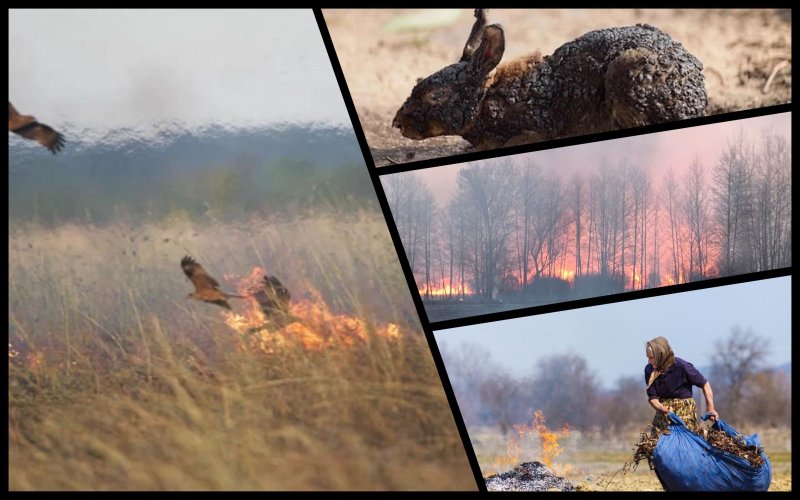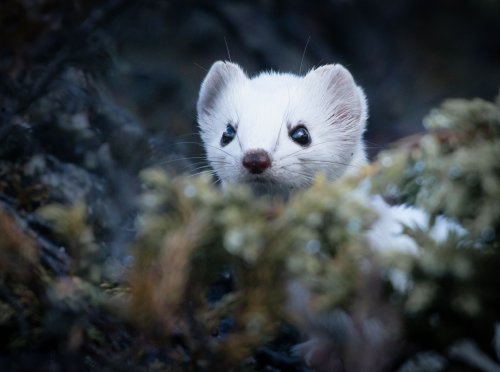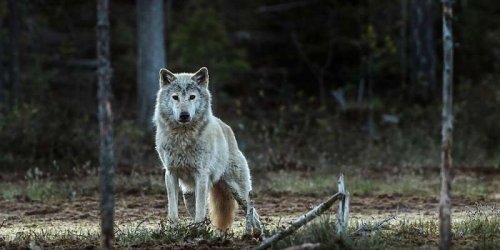With the onset of warm weather, natural fires become a real disaster for the environment. In the spring, last year's grass dries quickly and easily ignites from a match, cigarette or any slightest spark. And it is at this time that residents of private residential buildings and cottages actively begin to put things in order in their households, burning branches, dry grass and various rubbish.
But very often the fire gets out of human control – and such fires spread quickly, especially on windy days. They damage both farms and forest plantations. It is very difficult to stop a fire that has gained strength. EcoPolitic has collected for its readers the main arguments about why it is absolutely impossible to smoke dry grass in the spring.
This dangerous season lasts only a few weeks – from the time the snow melts and last year's dry grass dries up in open areas, until the start of the growth of young greenery. However, during this short time, grass fires become a real mass disaster. Fires caused by drought often turn into uncontrolled large-scale fires that destroy buildings, ecosystems and lead to the death of people. And in the conditions of martial law, they can also undermine Ukraine's defense capability.
The damage from burning leaves and dry grass is very strong both for human health and for the environment. After all, during the burning of one ton of dry plant material, about 9 kg of microparticles of smoke appear. These are dust, heavy metals, nitrogen oxides, carbon monoxide, and a number of carcinogenic compounds. Benzopyrene, which is formed in smoldering leaves and grass without access to oxygen, is very dangerous – it can cause cancer in humans. With the smoke, dioxins are also released into the air – one of the most poisonous substances for humans.
Very often, fire from gardens and fields spreads to forests, parks and nature reserves. A forest fire is an extremely powerful element. We all remember how in April 2021, there was a large-scale forest fire in the Chernobyl zone. As it turned out, it was caused by arson – local residents burned grass and garbage, the remains of smoldering fires spread over the dry grass. The Pali people were detained and they were charged with suspicion. Rescuers fought the fire for ten days, more than 100 hectares of forest were destroyed. In addition, for several days, air pollution indicators in Kyiv and the region exceeded the scale. Unfortunately, it is precisely because of spring fires of dry grass that the forest in the Chernobyl zone burns every year, but in April 2021 there was a particularly large fire that brought a lot of disaster. And the reason for this was someone's reckless decision to burn dry grass in their yard.
Zhytomyr ecologist Serhiy Melnychuk explained to EcoPolitics that there is no need to burn dry grass.
"In nature, everything is created extremely wisely – grass and bushes begin to grow after winter on their own, without the "help" of trees and people. In our climate, grass and branches rot themselves over time, they not only do not prevent the growth of young greenery, but also become beautiful organic fertilizer for it. During the dry grass burning season, the first spring flowers, herbs, and shrubs begin to sprout. As a result of dry burning, the fire not only devours the dry grass, but also destroys everything that is preparing to grow and bloom in the spring period. Unfortunately, after the fire consumes this or that area, the most undemanding grass and weeds survive and begin to sprout on it, which take over these areas and do not allow other types of plants to grow on them. Fire destroys the seeds of plants and herbs on the surface of the earth, and also under it," the expert explains.
He explained that seeds must pass a certain temperature regime in order to germinate. And even a slight increase in temperature can affect the germination of seeds, which are simply destroyed by fire.
"So wherever the fire devoured the land, there will be no former forbs, and instead of a variety of species, this area will be established by weeds. When the grass is set on fire, all the beneficial microflora of the soil, including those that help plants resist diseases, will die. It takes time to recover , the most valuable in the spring, when plants gain strength. All living things burn in the fire – hares, hedgehogs, chicks, insects that participate in the formation of the soil are destroyed. For earthworms, dry grass is food, which they very quickly process, transforming the most valuable fertilizer is humus. It is the earthworms, which also die en masse in the fire, that make the soil loose and alive," Melnychuk added.
Arsonists should realize that dry grass is not garbage, but food, shelter, shelter, necessary conditions for life, created by nature itself for animals and insects. When you burn grass in the city, you burn salts of heavy metals that have settled on the plants — such smoke is poisonous. In addition, there is garbage in the dry grass that is dangerous for burning, for example, bags, plastic bottles. In rural areas, the remains of fertilizers and toxic chemicals are burned in the fire, forming volatile toxic organic and inorganic compounds. When grass is burned along highways, air pollution with heavy metals occurs.
Grass fires are a significant source of carbon dioxide emissions into the atmosphere, which is formed not only due to the burning of fresh dry grass, but also due to the partial combustion of historically accumulated dead organic matter in the soil. This leads to unfavorable changes and more drastic fluctuations in the climate of our planet.
Roman Bugaichuk, the chief forester of the Horodnytsky Forest Farm, explained how burning dry grass can affect the forest ecosystem:
"A lot of damage is done to the trees, especially at the root neck, which is a very vulnerable place just above the ground. Not to mention that the trees can burn. The high temperature can burn the buds, which is very damaging to the tree, even if it survives. The most affected young trees (especially species such as oak, maple, linden). Grass fires cause significant damage to forest edges, destroy young trees, and serve as one of the main sources of fires in forests and peatlands. Even a small grass fire can lead to the death of young forest plantations created to protect fields from drying out, banks from erosion, roads from snow and dust drifts, etc. In a strong grass fire, almost all animals that live in dry grass or on the surface of the soil die. Some burn, some suffocate in the smoke Burnt bird's nests with traces of eggs, burnt snails, rodents, small mammals are very often found on fires. At the place of arson, the normal life of trees, plants and insects is restored. only after 5-6 years, but very often, unfortunately, it never recovers."
Well, it is necessary to remember that every burning of dry grass carries an administrative responsibility – rescuers remind that burning stubble, meadows, pastures, areas with steppe, wetland and other natural vegetation, grass or its remains, fallen leaves on agricultural lands , in the right-of-way of highways and railways, in parks, other green spaces and lawns in populated areas, is an administrative offense for which a fine of 3,060 to 6,120 UAH is provided for citizens.
However, unfortunately, even the fact that on March 3, 2022, amendments were made to the Criminal Code of Ukraine, which provide for increased liability for crimes against the foundations of national security under martial law, does not stop the current paliyas. In particular, in Article 113 "Sabotage" intentional arson, in particular, of dry vegetation, was added to the list of crimes. Violators are subject to imprisonment for a term of 10 to 15 years with confiscation of property. So is it worth smoking dry grass? The question, as they say, is rhetorical.





